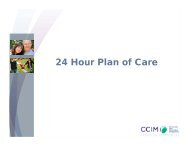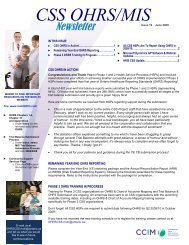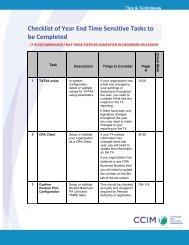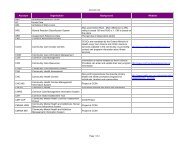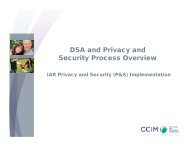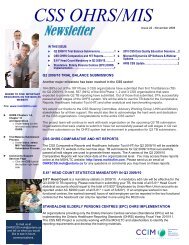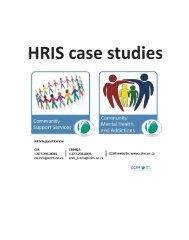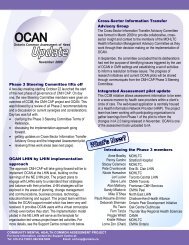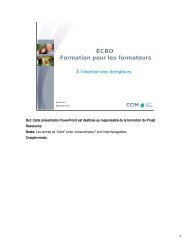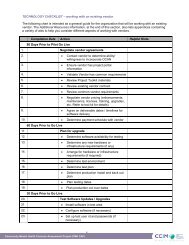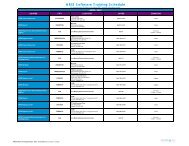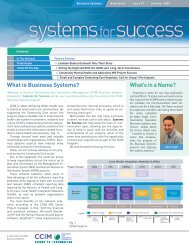RAI-MDS 2.0 Nutritional Care Resource Guide April 2011 - CCIM
RAI-MDS 2.0 Nutritional Care Resource Guide April 2011 - CCIM
RAI-MDS 2.0 Nutritional Care Resource Guide April 2011 - CCIM
- No tags were found...
You also want an ePaper? Increase the reach of your titles
YUMPU automatically turns print PDFs into web optimized ePapers that Google loves.
SECTION F: PSYCHOSOCIAL WELL-BEINGINTENTResident’s emotional adjustment to the facility, including his/her general attitude, adaptation to surroundingsand change in relationship patternsEXAMPLES: Sense of initiative/involvement, unsettled relationships etcSECTION G: PHYSICAL FUNCTIONING AND STRUCTURAL PROBLEMSINTENTResident’s self-care performance in ADL during the last seven days (how much they did, how much verbalor physical help was required from the staff)EXAMPLES: Bed mobility, transfer, dressing, eating, toilet use, bathing, test for balance, modes of transferSECTION H: CONTINENCEINTENTResident’s pattern of bladder and bowel continence (control) over the last 14 daysEXAMPLES: Bowel continence, bladder continence, elimination pattern etc.SECTION I: DISEASE DIAGNOSESINTENTPresence of diseases that have a relationship to the resident’s current ADL status, mood or behaviourstatus, medical treatments, nursing monitoring or risk of deathEXAMPLES: Anxiety disorder, Congestive Heart Failure, Cerebral Palsy etcSECTION J: HEALTH CONDITIONSINTENTSpecific problems or symptoms that affect or could affect the resident’s health or functional status, as wellas risk factors for that illness, accident and functional declineEXAMPLES: Problem conditions, pain symptoms, pain site, accidents, etc.For Information: 416.327.7625 6ltchrai@ontario.ca6



